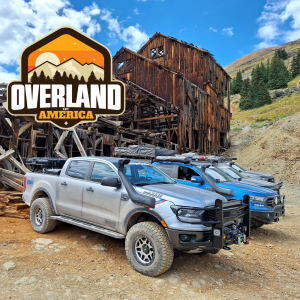- Joined
- Aug 19, 2001
- Messages
- 10,908
- City
- So. Calif (SFV)
- Vehicle Year
- 1990
- Engine
- 2.9 V6
- Transmission
- Manual
- Tire Size
- 35x12.50R15
I took my BII out today to a level parking lot and measured for the leverage ratio for both with stock radius arms, and 12" extended radius arms:
With stock radius arms:
Pivot axis to spring = 17⅛"
Pivot axis to tire = 25¼"
Leverage Ratio = 1.474:1
With 12" Extended arms:
Pivot axis to spring = 21¼"
Pivot axis to tire = 31"
Leverage Ratio = 1.453:1

 en.wikipedia.org
en.wikipedia.org
 en.wikipedia.org
en.wikipedia.org
The TTB would be considered a Class 2 Lever:

Resistance = Coil Spring
Fulcrum = TTB Pivot Axis
Effort = Weight of the Vehicle on Wheel (it pushing the wheel upward into the fender)
Lol on the ChatGPT. For a guy who's been dead for 18 years, you seem to be doing pretty well.
With stock radius arms:
Pivot axis to spring = 17⅛"
Pivot axis to tire = 25¼"
Leverage Ratio = 1.474:1
With 12" Extended arms:
Pivot axis to spring = 21¼"
Pivot axis to tire = 31"
Leverage Ratio = 1.453:1
Well, very often I have said that you have to multiply by 1.5 because the spring is located at a mid-point between the wheel and the TTB pivot axis, and so it functions as a lever. If that's not the "why" you are looking for, maybe there's something on one of these pages that can help?I don't like it when someone tells me that I have to multiply or divide something by 1.5 and doesn't tell me why. Leverage doesn't explain diddly to me. Leverage is basically replying with 'because'.

Lever - Wikipedia
Mechanical advantage - Wikipedia
(emphasis mine)Wikipedia said:A lever is a simple machine consisting of a beam or rigid rod pivoted at a fixed hinge, or fulcrum. A lever is a rigid body capable of rotating on a point on itself. On the basis of the locations of fulcrum, load, and effort, the lever is divided into three types. It is one of the six simple machines identified by Renaissance scientists. A lever amplifies an input force to provide a greater output force, which is said to provide leverage, which is mechanical advantage gained in the system, equal to the ratio of the output force to the input force. As such, the lever is a mechanical advantage device, trading off force against movement.
The TTB would be considered a Class 2 Lever:
Wikipedia said:Class II – Resistance (or load) is located between the effort and the fulcrum: The effort is applied on one side of the resistance and the fulcrum is located on the other side, e.g. a wheelbarrow, a nutcracker, a bottle opener, a wrench, and the brake pedal of a car. Since the load arm is smaller than the effort arm, the lever's mechanical advantage is always greater than 1. It is also called a force multiplier lever.
Resistance = Coil Spring
Fulcrum = TTB Pivot Axis
Effort = Weight of the Vehicle on Wheel (it pushing the wheel upward into the fender)
Lol on the ChatGPT. For a guy who's been dead for 18 years, you seem to be doing pretty well.













